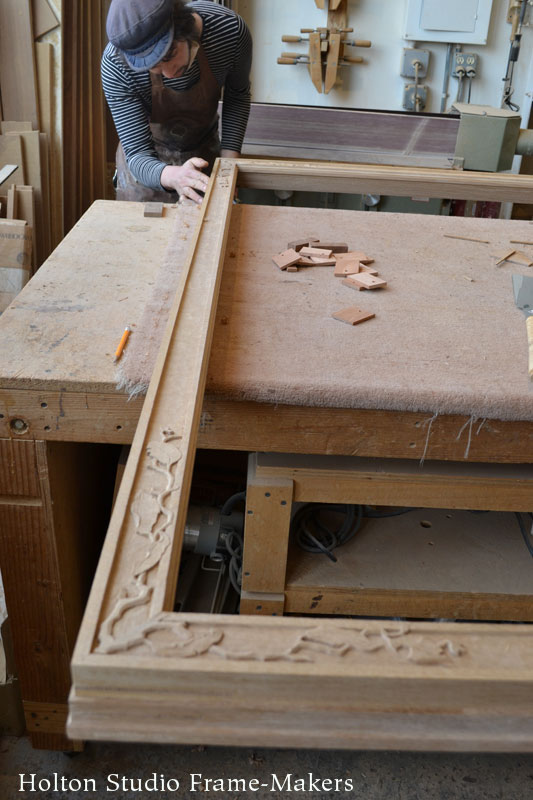In preparation to launch a new section of the catalog, “Mitered Frames—Special Corners,” I had a fresh look at the page “Closed-Corner Frames”, which explains one of the most fundamental aspects of our work, and found it needed sprucing up. So I added a couple of images and the copy below:
Look no further than the entry for the word “art” in Webster’s Dictionary to understand this elemental relationship between construction and beauty: the base of the word art is “ar-, to join, fit together,” and is “akin to Greek harmos, joint,” the root of the word harmony.
The point formed by the corner is, in a sense, the point of the frame, the art of frame-making and, in fact, of making pictures: to express—literally, to “press out” the artist’s vision into the world to join it to the life and larger creation of which it’s a part. The four corners of the frame radiate the picture in the fashion of a star, or any number of natural forms, including flower petals or leaf clusters enlivened above all by their primal aspiration toward the source of life in sun, oxygen, and water. For this reason, we can suppose, the most suitable decorative motifs for corners have been flowers and leaves, or patterns derived from them.
The significance of the corners is therefore, if rarely understood or explained, keenly felt: when the frame-maker looks for “something to do with the frame”—a way to decorate it to give a suitably significant and enhancing place to the picture—instinct can’t help but go to the corners.
Call that instinct the human creative instinct—the artistic instinct, which is, by definition, the instinct to join the world. Those artistic powers, powers to make, and put things together, are unique, but are nonetheless fundamentally driven by the same instinct as leaves and flowers and trees, reaching out for life.
I’ll also be updating the gallery at the bottom of the “Closed-Corner Frames” page, which will be a very small sampling of the new catalog page.
See the updated page, “Closed-Corner Frames.”
The picture below shows Eric Johnson cleaning up the splines on the cap moulding of a large compound frame made for a Thomas Hill painting. Learn more about that piece…
« Back to Blog